 Backend Development
Backend Development Python Tutorial
Python Tutorial Scrapy case analysis: How to crawl company information on LinkedIn
Scrapy case analysis: How to crawl company information on LinkedInScrapy is a Python-based crawler framework that can quickly and easily obtain relevant information on the Internet. In this article, we will use a Scrapy case to analyze in detail how to crawl company information on LinkedIn.
- Determine the target URL
First of all, we need to make it clear that our target is the company information on LinkedIn. Therefore, we need to find the URL of the LinkedIn company information page. Open the LinkedIn website, enter the company name in the search box, and select the "Company" option in the drop-down box to enter the company introduction page. On this page, we can see the company's basic information, number of employees, affiliated companies and other information. At this point, we need to obtain the URL of the page from the browser's developer tools for subsequent use. The structure of this URL is:
https://www.linkedin.com/search/results/companies/?keywords=xxx
Among them, keywords=xxx represents the keywords we searched for, xxx can be replaced with any company name.
- Create a Scrapy project
Next, we need to create a Scrapy project. Enter the following command on the command line:
scrapy startproject linkedin
This command will create a Scrapy project named linkedin in the current directory.
- Create a crawler
After creating the project, enter the following command in the project root directory to create a new crawler:
scrapy genspider company_spider www. linkedin.com
This will create a spider named company_spider and locate it on the Linkedin company page.
- Configuring Scrapy
In Spider, we need to configure some basic information, such as the URL to be crawled and how to parse the data in the page. Add the following code to the company_spider.py file you just created:
import scrapy
class CompanySpider(scrapy.Spider):
name = "company"
allowed_domains = ["linkedin.com"]
start_urls = [
"https://www.linkedin.com/search/results/companies/?keywords=apple"
]
def parse(self, response):
passIn the above code, we define the site URL to be crawled and the parsing function. In the above code, we have only defined the site URL to be crawled and the parsing function, and have not added the specific implementation of the crawler. Now we need to write the parse function to capture and process LinkedIn company information.
- Write parsing function
In the parse function, we need to write code to capture and process LinkedIn company information. We can use XPath or CSS selectors to parse HTML code. Basic information in the LinkedIn company information page can be extracted using the following XPath:
//*[@class="org-top-card-module__name ember-view"]/text()
This XPath will select the element with class "org-top-card-module__name ember-view" and return its text value.
The following is the complete company_spider.py file:
import scrapy
class CompanySpider(scrapy.Spider):
name = "company"
allowed_domains = ["linkedin.com"]
start_urls = [
"https://www.linkedin.com/search/results/companies/?keywords=apple"
]
def parse(self, response):
# 获取公司名称
company_name = response.xpath('//*[@class="org-top-card-module__name ember-view"]/text()')
# 获取公司简介
company_summary = response.css('.org-top-card-summary__description::text').extract_first().strip()
# 获取公司分类标签
company_tags = response.css('.org-top-card-category-list__top-card-category::text').extract()
company_tags = ','.join(company_tags)
# 获取公司员工信息
employees_section = response.xpath('//*[@class="org-company-employees-snackbar__details-info"]')
employees_current = employees_section.xpath('.//li[1]/span/text()').extract_first()
employees_past = employees_section.xpath('.//li[2]/span/text()').extract_first()
# 数据处理
company_name = company_name.extract_first()
company_summary = company_summary if company_summary else "N/A"
company_tags = company_tags if company_tags else "N/A"
employees_current = employees_current if employees_current else "N/A"
employees_past = employees_past if employees_past else "N/A"
# 输出抓取结果
print('Company Name: ', company_name)
print('Company Summary: ', company_summary)
print('Company Tags: ', company_tags)
print('
Employee Information
Current: ', employees_current)
print('Past: ', employees_past)In the above code, we use XPath and CSS selectors to extract the basic information, company profile, tags and employee information in the page, And performed some basic data processing and output on them.
- Run Scrapy
Now, we have completed crawling and processing the LinkedIn company information page. Next, we need to run Scrapy to execute the crawler. Enter the following command on the command line:
scrapy crawl company
After executing this command, Scrapy will begin to crawl and process the data in the LinkedIn company information page, and output the crawl results.
Summary
The above is how to use Scrapy to crawl LinkedIn company information. With the help of the Scrapy framework, we can easily carry out large-scale data scraping, and at the same time be able to process and transform data, saving our time and energy and improving data collection efficiency.
The above is the detailed content of Scrapy case analysis: How to crawl company information on LinkedIn. For more information, please follow other related articles on the PHP Chinese website!
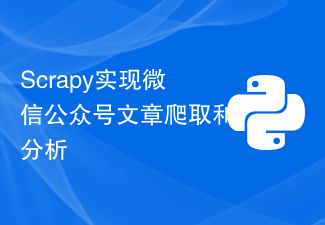 Scrapy实现微信公众号文章爬取和分析Jun 22, 2023 am 09:41 AM
Scrapy实现微信公众号文章爬取和分析Jun 22, 2023 am 09:41 AMScrapy实现微信公众号文章爬取和分析微信是近年来备受欢迎的社交媒体应用,在其中运营的公众号也扮演着非常重要的角色。众所周知,微信公众号是一个信息和知识的海洋,因为其中每个公众号都可以发布文章、图文消息等信息。这些信息可以被广泛地应用在很多领域中,比如媒体报道、学术研究等。那么,本篇文章将介绍如何使用Scrapy框架来实现微信公众号文章的爬取和分析。Scr
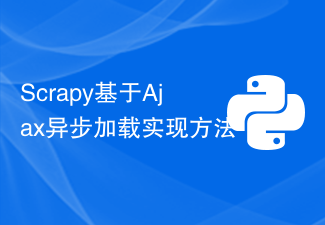 Scrapy基于Ajax异步加载实现方法Jun 22, 2023 pm 11:09 PM
Scrapy基于Ajax异步加载实现方法Jun 22, 2023 pm 11:09 PMScrapy是一个开源的Python爬虫框架,它可以快速高效地从网站上获取数据。然而,很多网站采用了Ajax异步加载技术,使得Scrapy无法直接获取数据。本文将介绍基于Ajax异步加载的Scrapy实现方法。一、Ajax异步加载原理Ajax异步加载:在传统的页面加载方式中,浏览器发送请求到服务器后,必须等待服务器返回响应并将页面全部加载完毕才能进行下一步操
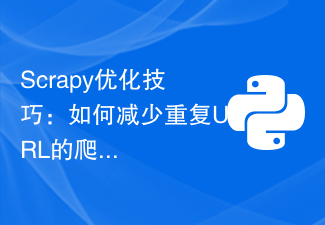 Scrapy优化技巧:如何减少重复URL的爬取,提高效率Jun 22, 2023 pm 01:57 PM
Scrapy优化技巧:如何减少重复URL的爬取,提高效率Jun 22, 2023 pm 01:57 PMScrapy是一个功能强大的Python爬虫框架,可以用于从互联网上获取大量的数据。但是,在进行Scrapy开发时,经常会遇到重复URL的爬取问题,这会浪费大量的时间和资源,影响效率。本文将介绍一些Scrapy优化技巧,以减少重复URL的爬取,提高Scrapy爬虫的效率。一、使用start_urls和allowed_domains属性在Scrapy爬虫中,可
 深度使用Scrapy:如何爬取HTML、XML、JSON数据?Jun 22, 2023 pm 05:58 PM
深度使用Scrapy:如何爬取HTML、XML、JSON数据?Jun 22, 2023 pm 05:58 PMScrapy是一款强大的Python爬虫框架,可以帮助我们快速、灵活地获取互联网上的数据。在实际爬取过程中,我们会经常遇到HTML、XML、JSON等各种数据格式。在这篇文章中,我们将介绍如何使用Scrapy分别爬取这三种数据格式的方法。一、爬取HTML数据创建Scrapy项目首先,我们需要创建一个Scrapy项目。打开命令行,输入以下命令:scrapys
 Scrapy爬虫实践:爬取QQ空间数据进行社交网络分析Jun 22, 2023 pm 02:37 PM
Scrapy爬虫实践:爬取QQ空间数据进行社交网络分析Jun 22, 2023 pm 02:37 PM近年来,人们对社交网络分析的需求越来越高。而QQ空间又是中国最大的社交网络之一,其数据的爬取和分析对于社交网络研究来说尤为重要。本文将介绍如何使用Scrapy框架来爬取QQ空间数据,并进行社交网络分析。一、Scrapy介绍Scrapy是一个基于Python的开源Web爬取框架,它可以帮助我们快速高效地通过Spider机制采集网站数据,并对其进行处理和保存。S
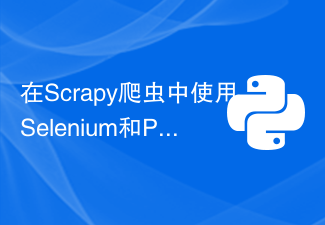 在Scrapy爬虫中使用Selenium和PhantomJSJun 22, 2023 pm 06:03 PM
在Scrapy爬虫中使用Selenium和PhantomJSJun 22, 2023 pm 06:03 PM在Scrapy爬虫中使用Selenium和PhantomJSScrapy是Python下的一个优秀的网络爬虫框架,已经被广泛应用于各个领域中的数据采集和处理。在爬虫的实现中,有时候需要模拟浏览器操作去获取某些网站呈现的内容,这时候就需要用到Selenium和PhantomJS。Selenium是模拟人类对浏览器的操作,让我们可以自动化地进行Web应用程序测试
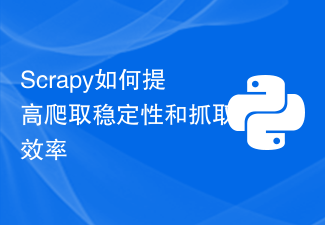 Scrapy如何提高爬取稳定性和抓取效率Jun 23, 2023 am 08:38 AM
Scrapy如何提高爬取稳定性和抓取效率Jun 23, 2023 am 08:38 AMScrapy是一款Python编写的强大的网络爬虫框架,它可以帮助用户从互联网上快速、高效地抓取所需的信息。然而,在使用Scrapy进行爬取的过程中,往往会遇到一些问题,例如抓取失败、数据不完整或爬取速度慢等情况,这些问题都会影响到爬虫的效率和稳定性。因此,本文将探讨Scrapy如何提高爬取稳定性和抓取效率。设置请求头和User-Agent在进行网络爬取时,
 如何使用Scrapy爬取豆瓣图书及其评分和评论?Jun 22, 2023 am 10:21 AM
如何使用Scrapy爬取豆瓣图书及其评分和评论?Jun 22, 2023 am 10:21 AM随着互联网的发展,人们越来越依赖于网络来获取信息。而对于图书爱好者而言,豆瓣图书已经成为了一个不可或缺的平台。并且,豆瓣图书也提供了丰富的图书评分和评论,使读者能够更加全面地了解一本图书。但是,手动获取这些信息无异于大海捞针,这时候,我们可以借助Scrapy工具进行数据爬取。Scrapy是一个基于Python的开源网络爬虫框架,它可以帮助我们高效地


Hot AI Tools

Undresser.AI Undress
AI-powered app for creating realistic nude photos

AI Clothes Remover
Online AI tool for removing clothes from photos.

Undress AI Tool
Undress images for free

Clothoff.io
AI clothes remover

AI Hentai Generator
Generate AI Hentai for free.

Hot Article

Hot Tools

Dreamweaver Mac version
Visual web development tools

VSCode Windows 64-bit Download
A free and powerful IDE editor launched by Microsoft

MinGW - Minimalist GNU for Windows
This project is in the process of being migrated to osdn.net/projects/mingw, you can continue to follow us there. MinGW: A native Windows port of the GNU Compiler Collection (GCC), freely distributable import libraries and header files for building native Windows applications; includes extensions to the MSVC runtime to support C99 functionality. All MinGW software can run on 64-bit Windows platforms.

PhpStorm Mac version
The latest (2018.2.1) professional PHP integrated development tool

SAP NetWeaver Server Adapter for Eclipse
Integrate Eclipse with SAP NetWeaver application server.





